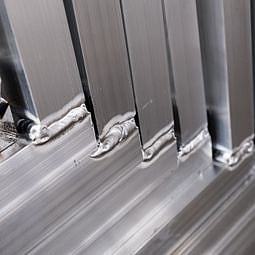
Aluminum has become a popular material used across all sorts of industries thanks to its multitude of benefits. While most industries enjoy aluminum framing systems for their strength-to-weight ratio or incredible versatility, an equally important trait that aluminum has is the ability to resist and endure thermal extremes. Here are three ways aluminum framing systems increase thermal efficiency.
Because of the high thermal conductivity of aluminum extrusions, savvy implementation of a framing system can greatly improve a building’s thermal efficiency. In particular, aluminum is at its best when facing cold temperatures because it becomes stronger, improving its structural integrity. In contrast, its heat conductivity makes aluminum resistant to the corrosion that can occur from extreme heat. Combined with thermal breaks developed in the 1970s, aluminum framing effectively manages heat so that your building doesn’t become damaged or require more resources to keep its climate comfortable.
One the ways aluminum framing systems increase thermal efficiency is by improving a building’s condensation resistance. Condensation is a subtle but major threat to any construction, but the natural corrosion resistance of aluminum makes it much easier to prevent corrosion like rust from occurring. Furthermore, due to the excellent thermal performance of aluminum, condensation has a harder time sapping the heat from a building. Thus, it helps maintain a warm, comfortable interior.
Aluminum sunshades are seamless additions to a framing structure. Using them is one of the most popular ways to improve energy and thermal efficiency. Sunshades are highly customizable and versatile and can fit any construction design without compromising performance. Sunshades help shield a building from harmful UV rays while still allowing a building to have comfortable natural lighting. Aluminum sunshades are the best way to optimize natural lighting while minimizing the discomfort of sunlight and its heat.